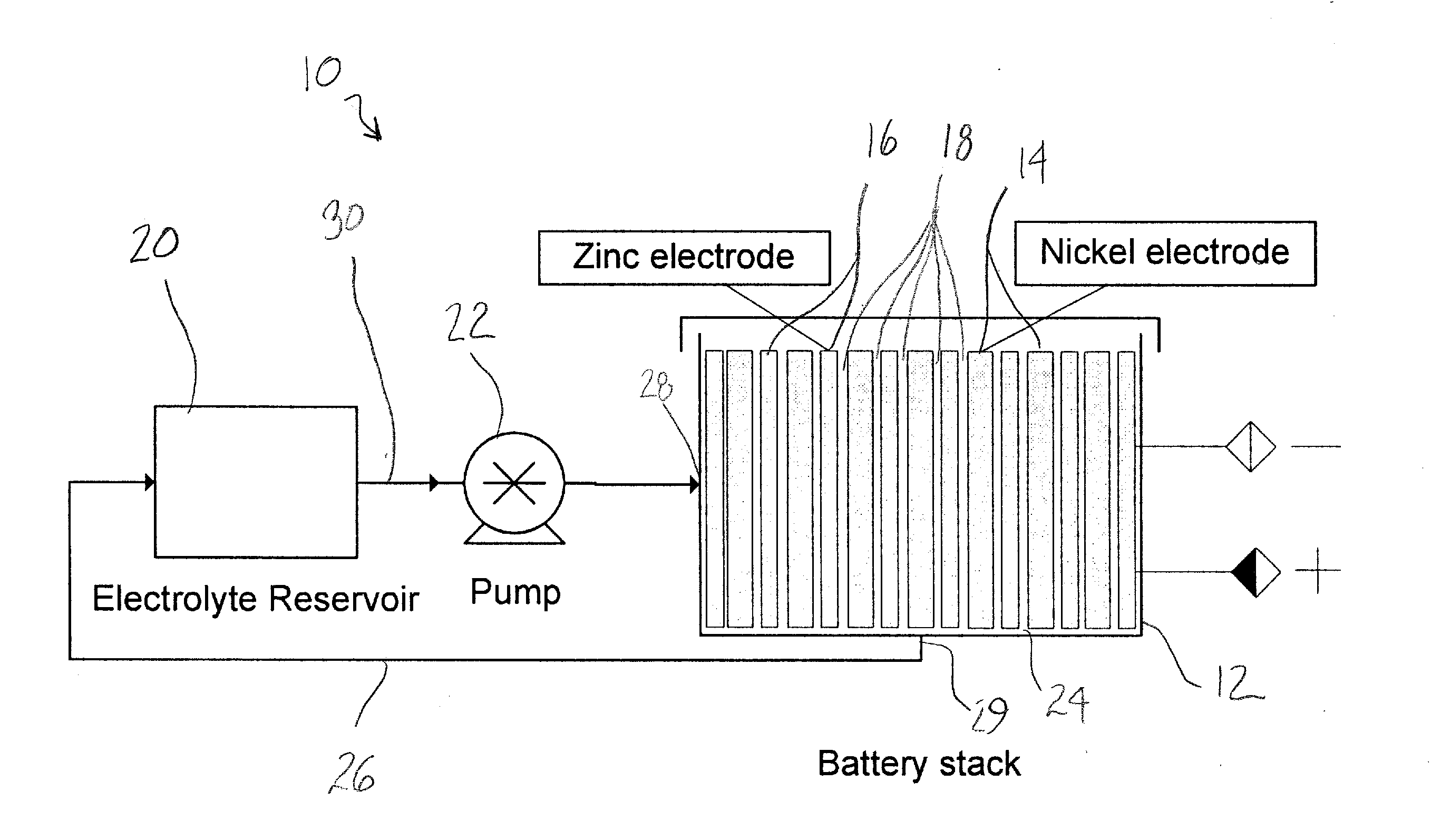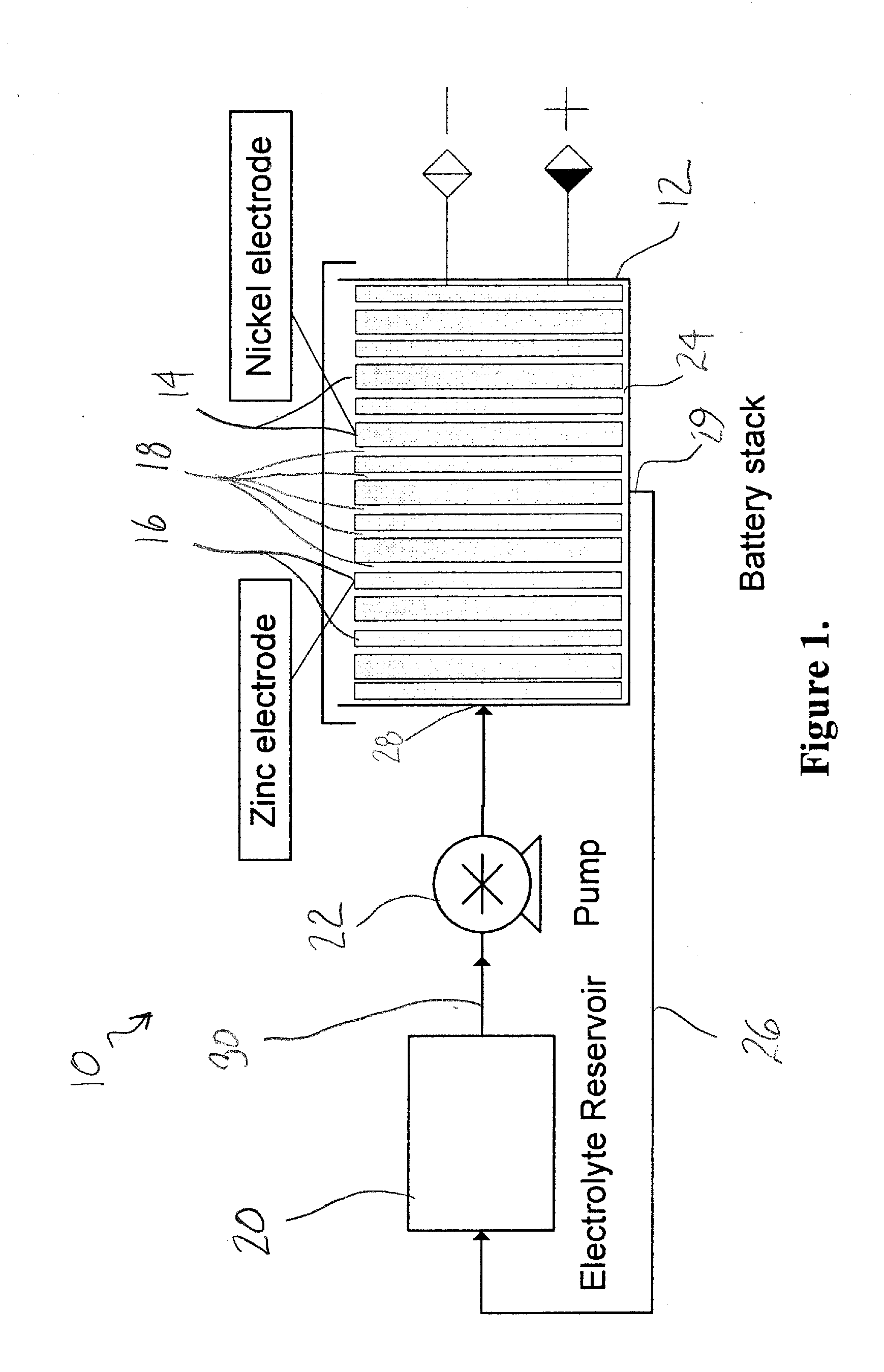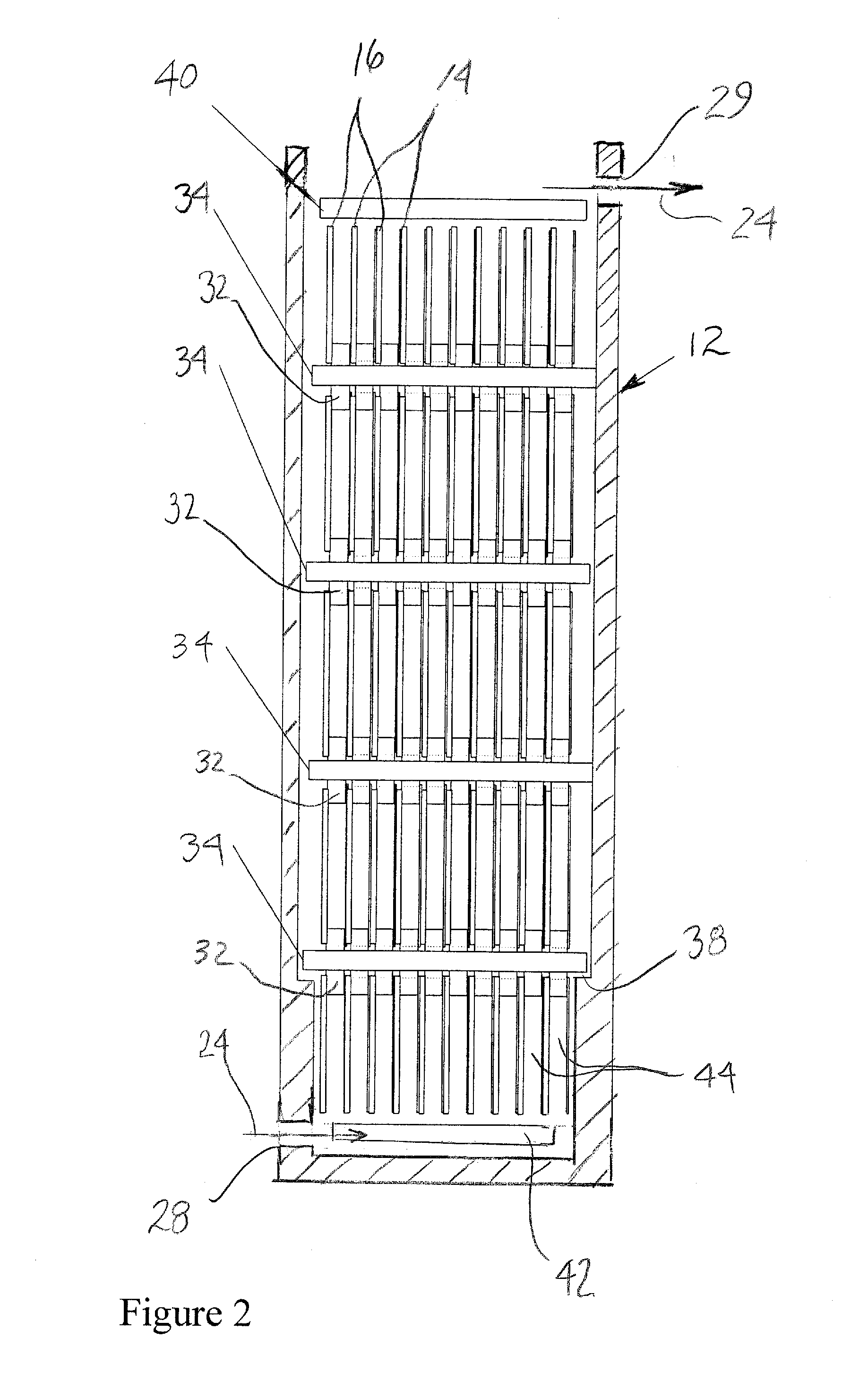Nickel-Zinc Flow Battery
a nickel zinc and flow battery technology, applied in the field of rechargeable batteries, can solve the problems of preventing widespread adoption, affecting the cycle life of nickel zinc batteries, and the tendency of the zinc electrode in the nickel-zinc battery system to become misshapen, etc., and achieve the effect of prolonging the cycle life of nickel-zinc batteries
- Summary
- Abstract
- Description
- Claims
- Application Information
AI Technical Summary
Benefits of technology
Problems solved by technology
Method used
Image
Examples
example i
[0066]A sintered nickel type of nickel oxide positive electrode with the following parameters was used: length=4.5″, width=5.5″, thickness=0.029″, capacity (theoretical) 4.0 Ah, weight=29 g. A polypropylene frame was used, which provided a 0.125″ gap between the electrodes. A nickel-plated copper sheet was used as the negative electrode substrate, and the dimensions of the copper sheet were 4.5″×5.5″×0.003″. The battery electrolyte was 45% KOH, to which 50 g / L zinc oxide was added. The electrolyte reservoir contained 300 mL of the electrolyte, and the electrolyte was circulated at 300 mL / minute through the gap in the electrodes provided by the spacer.
[0067]The performance of the cell is shown in FIG. 2. At cycles 190, 220, and 250, some performance degradation was noted. At each of these cycles, a reconditioning cycle was performed by discharging the cell at 0.75 A to 0.0 V. By driving the cell voltage to zero, a complete stripping of the zinc from the copper sheet substrate was obt...
PUM
 Login to View More
Login to View More Abstract
Description
Claims
Application Information
 Login to View More
Login to View More - R&D
- Intellectual Property
- Life Sciences
- Materials
- Tech Scout
- Unparalleled Data Quality
- Higher Quality Content
- 60% Fewer Hallucinations
Browse by: Latest US Patents, China's latest patents, Technical Efficacy Thesaurus, Application Domain, Technology Topic, Popular Technical Reports.
© 2025 PatSnap. All rights reserved.Legal|Privacy policy|Modern Slavery Act Transparency Statement|Sitemap|About US| Contact US: help@patsnap.com



